 Facebook
Facebook
 X
X
 Instagram
Instagram
 TikTok
TikTok
 Youtube
Youtube
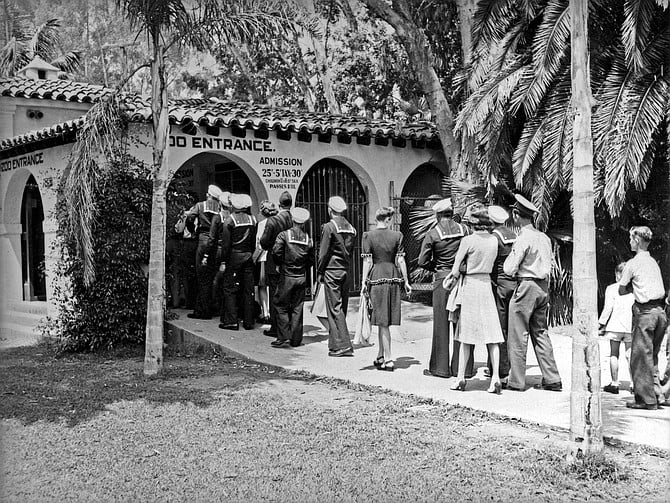
The zoo I remember is the zoo that I miss.
When I was a kid, my mom used to take me to the zoo every Saturday, after German school at the nearby Grace Lutheran church complex. We started the zoo visit with lunch: tacos, a variant of the kind served at Jack in the Box, just a lot more cheese. Then we’d be off to walk around the exhibits.
The Monkey Yard was one of my favorites. Monkeys were housed in 36 cages, arranged in clusters like small city walks to the right of the main promenade. I remember my mom taking great delight in the proboscis, or long-nosed, monkey, known as bekantan in its native Indonesia. “He looks just like Jimmy Durante,” she’d say time and time again.

At the far end of the Monkey Yard, down a wide staircase, were the gorillas and chimpanzees. The apes were in outdoor grottos fronted by grassy knolls, separated from zoo guests by a moat — the same setup that’s still in place at the San Diego Zoo’s North County cousin, the Safari Park. After a stare down with one or more gorillas, some wiseacre would throw something at the gorillas, maybe a slice of bread, a peanut, or a scrunched up hot dog wrapper. The gorilla would throw something back, most often a chunk of shit.
Hoof Mesa was another favorite. We’d walk along meandering sidewalks on either side of a paved road reserved for buses, and gaze at the gazelles and ibexes, okapis and zebras, giraffes and elephants. The African Plains exhibit, a fixture since 1965, seemed to a young me like a real-life version of Daktari, one of my favorite TV shows, about veterinarians at an East African animal clinic. This is where I first started taking pictures, with my Kodak 126 Instamatic black-and-white.
The Children’s Zoo was our final stop. To me, it was paradise. I have so many fond memories of the Children’s Zoo. Watching the mice carve tunnels in the oversized bread loaf in a glass aquarium. Feeding peanuts to the baby elephants. Encouraging the Mynah birds to talk. Getting up close to the spider monkey, who once grabbed my glasses. We had to find a zookeeper to get them back. The figure-eight enclosure where you could pick up and pet puppies and kittens. The chicken hatchery, where you could watch baby chicks emerge from the egg under a warming light and then grab them and hold them as soon as they ventured out from under the light into the perimeter, covered with cedar shavings. And, of course, the petting corral, with baby deer and baby sheep and old goats who always nibbled at my mom’s long sunflower-patterned dress. We used to bring along a bag of dried bread to feed the critters, and I was always sad when we ran out.
The San Diego Zoo of my memories no longer exists. An ambitious transformation project that began in 1986 has seen most of the old zoo wiped out in favor of “bio-climate” zones, with multiple species sharing vast enclosures that resemble their natural habitats, often visible to zoo guests behind glass.
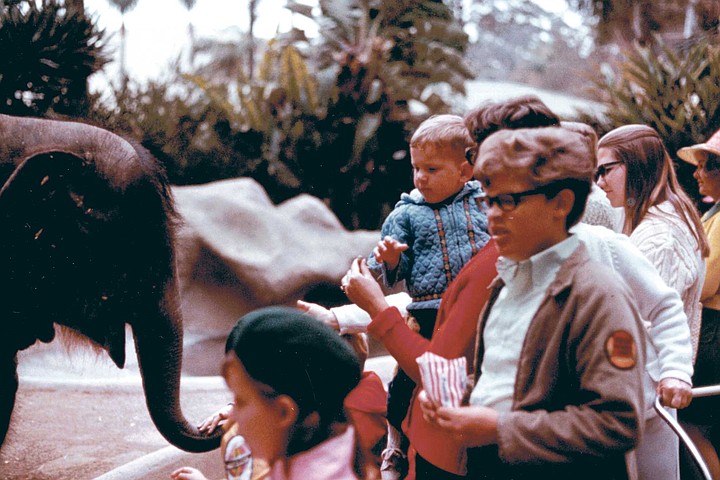
About all that’s left from the zoo of my youth is Fern Canyon, a magical botanical garden of ferns from around the world that you walk through on a steep and narrow concrete and stone path.
Pretty much everything else is gone. The Monkey Yard was wrecked in 2001 to make way for the Heart of the Zoo III. By the time it opened four years later, it had been renamed Monkey Trails and Forest Tales, a three-acre, three-level, mesh-enclosed exhibit housing primates and other mammals.
The gorilla exhibit was leveled more than a decade earlier, in 1991, to make way for Gorilla Tropics, a 10,000-square-foot habitat with several glass-walled viewing areas for zoo visitors.
Horn & Hoof Mesa was razed for the May 2009 opening of the Elephant Odyssey, with a museum-like exhibit on the La Brea Tar Pits and an Elephant Care Center, where visitors can watch elephants getting their feet scrubbed.
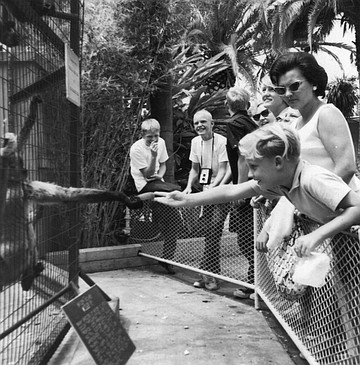
And the Children’s Zoo, the latest casualty of the old zoo, has been completely torn down as construction commences on the new Sanford Children’s Zoo, named for billionaire businessman T. Denny Sanford, who chipped in $30 million, nearly half the project’s $69 million cost. The new Children’s Zoo, slated to open sometime next year, will highlight four distinct environments, according to the zoo’s website: Desert Dunes, Wild Woods, Rain Forest, and Marsh Meadows. “Each area will incorporate play and learning opportunities for young guests,” the zoo says. Attractions include a dung beetle globe fountain, a rope climb, and a 25-foot-high treehouse.
Dwight Scott, the director of the San Diego Zoo, told me in an email that the zoo is simply evolving with its audience. “As a conservation organization, it is important for us to maintain our connection to the next generation,” he said. “With the proliferation of technology, it has grown increasingly difficult to gets kids engaged in nature at a young age. We decided to design the Children’s Zoo to include spaces where each child gets the opportunity to learn about the environments, and possibly witness the world from the animal’s perspective. Our aim is to build empathy for nature among young guests. In fact, we believe the development of empathy at an early age will positively impact children throughout their lives.”
Couldn’t the petting corral have been maintained? “To make sure we were effectively designing an area that provided children with the best educational opportunities, we needed more space than what we had in our footprint,” Scott said. “We encourage families to visit our other zoological sanctuary, the San Diego Zoo Safari Park, where children can still experience the contact yard.”
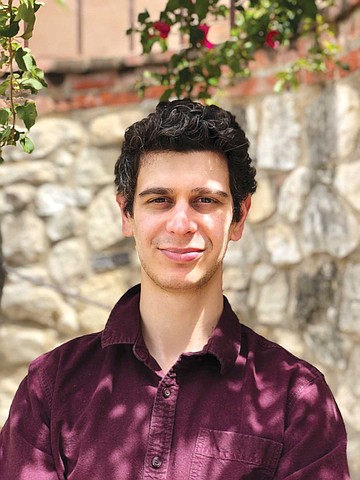
A random sampling of San Diegans, solicited through my Facebook page, applauded the zoo’s 30-plus-year makeover.
“Animals should be free to roam and do their thing,” said John Thill of Oceanside. “Would you enjoy being a human in a viewable enclosure?”
“It’s all about the animals and their comfort,” said Kerry Siekmann of Carlsbad. “The more comfortable they are, the better chances of reproduction — and that is the goal.”
The zoo’s Dwight Scott said simply, “It is important for people to think of species in terms of the other species they live with, and the ecosystems they inhabit. This allows our guests to better understand the need to protect the entire living system.” As for more future changes, he merely said, “It is important that we always have plans to improve through development. We are committed to saving species around the world, and we are equally committed to ensuring that the wildlife at the Zoo continue to receive great care, and have wonderful habitats to exhibit their natural behaviors.”

The zoo’s transformation began with the 1986 drafting of a Diamond Edge plan, aimed at setting the zoo on a new path in time for its 75th birthday in 1991. Writing in the San Diego Union in April 1986, Gina Lubrano reported that the zoo’s “climate-zone conversion will take at least 20 years to complete and cost an estimated $100 million.” The plan called for animals, previously grouped according to types, to be “bioclimatic — plants and animals found in particular climates, such as desert or tropics, will be grouped together,” Lubrano wrote.
The first new exhibit under the Diamond Edge plan was a $1 million kopje exhibit that opened in June 1986. Richard Binford, deputy director of the zoological society, told the Union that “the kopje is a major test of the bioclimatic concept.” He said visitor reaction to the kopje “will be watched carefully to measure likes and dislikes and to get ideas on what will work,” according to the article. Dr. James Dolan, the society’s curator of mammals, told the newspaper, “I’m really hot on the entire redevelopment plan…. It’s a really exciting time for all of us to see the Zoo developing in a new direction, a very modern direction.”
Design guidelines for the bioclimatic exhibits contained five goals, Lubrano wrote:
1) Re-create the drama of encountering animals in the wild by creating an illusion of wilderness. 2) Recreate the natural habitat as accurately as possible and populate it with animals that are found in the environment. 4) Immerse the visitor in the landscape by allowing him to wander around “sensing the feel, sight, smell and mood of that landscape before actually seeing the animals.” Place the visitor in an unfamiliar world and make the animal dominate overall. “Arrange the exhibit so that the viewer unconsciously accepts the attitude of being at that moment subordinate to animals being viewed.” 5) Eliminate distracting and incongruous objects and views, such as man-made structures including barriers, feeding devices, access gates, reflections, buildings, and utilities.

After the kopje exhibit came the $4 million transformation of the old Cascade Canyon into the Kroc Family Tropical Rain Forest Exhibit, now known as Tiger River, which opened in March 1988. Three years later, in March 1991, came Gorilla Tropics, which was followed in April 1993 by a 6000-square-foot naturalistic exhibit for chimpanzees and a cluster of 20 new aviaries called the Wings of Australasia.
May 1995 saw the opening of Hippo Beach, featuring a 110-foot long, 150,000-gallon pool with underwater viewing constructed on a three-acre site in Cascade Canyon, just past the rainforest. Four years later, after okapis, forest buffalo, river otters, guenons, turacos and peafowl were added, the entire complex was renamed Ituri Forest. Also in 1999, the original bird of prey aviary, which had been built in 1937, was transformed into the new Owens’ Rainforest Aviary, housing more than 200 birds from Southeast Asia. The $4 million renovation has more than 1000 feet of linear walkways.
During the four-year-long Heart of the Zoo III project that began in 2001 with the leveling of the Monkey Yard, the Flamingo Lagoon was reconfigured and incorporated into the Monkey Trails and Forest Tales.

The next big project was the Elephant Odyssey, followed in 2017 by Africa Rocks, built on eight acres previously known as Dog and Cat Canyon. The $68 million undertaking, the zoo’s biggest construction project yet, “relies on the newest thinking about zoos, which find themselves in an ongoing debate about the treatment of animals in captivity and are designing exhibits that are more naturalistic, more focused on conservation than entertainment,” the San Diego Union observed at the time. “That’s why the space for the African penguins, an endangered species, includes giant artificial rocks like the granite ones found at Boulders Beach in South Africa. It’s why the 170-foot-long pool they swim in has a wave-making machine to mimic gentle surf rolling ashore. And it’s why there are holes that lead to nesting caves carved into some of the rocks, a way of encouraging the penguins to breed…. Pedestrians will walk on a gently sloping, meandering pathway — built wide to accommodate strollers and the increased number and girth of visitors — past six distinct habitats housing flora and fauna from the African continent.”
The Union report concluded, “It’s more about immersion than staring.”
But some longtime zoo-goers feel the zoo has gone too far in its transformation.
Christopher Barclay, 34 and a lifelong San Diegan, has been going to the zoo regularly his whole life and has had his own yearly pass for the last 20 years. He still enjoys the zoo but misses the up-close and personal engagements with the animals he remembers from his youth.
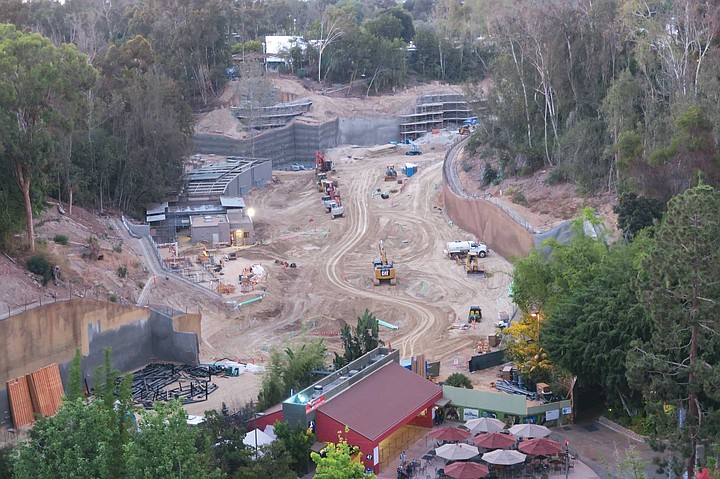
“It sucks that they are going the opposite route of letting people get close to the animals,” he says. “I don’t remember what came before the Elephant Odyssey, but those elephants are quite far away now. The fake tar pits are pretty lame and just, like, why? I do remember the gorillas being across a gorge at one point… I do like how the orangutans are set up. It feels like you can be right next to them. But the new baboons area — they are hardly ever within view, much less close enough to interact with.”
Still, Barclay says he understands the reasoning behind the zoo’s protracted bio-climate zone makeover. “The San Diego Zoo is a global leader in changing how zoos operate,” he says. “It seems they want to go in the direction of less direct human interaction. They seem to want people to get the feeling they are viewing live animals in their natural habitat, and not a pet in a cage.”
Dave Kusumoto, 61, says he misses the moats, “which paradoxically were meant to create the illusion of animals being free to roam without being behind bars.”
“The bio-climate thing is a bit much,” he says. “These changes in the visiting experience replace ‘fun’ in a disproportionate way with ‘education,’ wiping out the interactive elements of the zoo. However, this might be the view among older visitors vs. younger ones moving forward, who are not seeing the visiting experience being re-designed. Our generation is visibly irritated but we’ll eventually be gone. After all, even Yellowstone National Park was once famous for letting visitors feed the bears from their cars….”

The zoo’s efforts, Kusumoto says, “are, in my view, a temporary accommodation to reduce the target on its back to eliminate zoos broadly and their man-made displays of animals in ‘captivity’. Zoos are so controversial that you can draw direct lines to Sea World’s troubles (which I expect will lead to the eventual closing of all of its parks) and the death of the Ringling Bros. circus. All zoologists can see that. And I anticipate that despite ‘remedial’ efforts now, there will be continued efforts to legislate them out of existence.”
He pauses. “I remember being in a store in [San Francisco International Airport] some years back, and the bored clerk chatted me up and we had a nice conversation. But then she asked where I lived. When I told her, her face fell and she said, ‘Oh, you live in that horrible city that supports that horrible zoo.’ Her expression turned to one of disgust. End of friendly banter.”
Kusumoto says he believes that despite the Zoological Society’s research efforts on behalf of animals and conservation, “efforts to address its ‘displays’ in relation to how animal rights activists perceive its care of creatures in captivity won’t be enough as people continue debating the value, or non-value, of zoos.”
On Yelp, the San Diego Zoo has an average rating of 4.5 stars (out of five), from 4514 reviews that have been posted since the crowd-sourced review site was launched in 2005. The majority, 2980, give the zoo five stars. But 141 zoo visitors have given the zoo a one-star rating, and the lack of visibility of the animals is frequently cited as a top complaint.
Alyssa K., from Los Angeles, wrote in December 2019, “There are barely any animals in the zoo…. Good place if you want to go hike and see birds but other than that, don’t waste your money. We only saw like five elephants and two lions and a few dears [sic] and just a few number of every type of animals.”
Angel Y. from Fremont in August 2019 wrote, “Waaaay overrated!... It was more of a walk through the forest type of thing. For how much it costs ($56 per adult) we feel ripped off to say the least. You’re better off watching YouTube animals.”
After visiting the zoo at night, Joseph D. from Elk Grove wrote that half the animals “were in water or behind glass which we needed a flashlight to see.”
Kevin T. from Lebanon, Ohio complained, “You cannot see over half of the animals. The cages/pens are set up so the animals can hide, and you never see them. Want to go to a great zoo, go to Cleveland, Ohio. Crummy town, way better zoo.”
And Marilyn G. from Hialeah, Florida, wrote, “It amazes me how everyone calls it the best zoo in the world. CLEARLY they haven’t traveled much if at all. I have traveled around the United States and it has to be one of my least favorite zoos. It takes FOREVER to get to anything. You literally have to walk up these steep slopes to get anywhere. There’s A LOT of open space with no animals in the super long walks you have to take to get to the next animal area. … This is one of the biggest zoos I’ve been to and yet it’s the one I’ve seen the least amount of animals in.”
The Children’s Zoo makeover is particularly painful for Liz Abbott, publisher of the San Diego Troubadour, a local music magazine, because of the elimination of the petting corral, which in February 1966 was the setting for the Beach Boys’ Pet Sounds album cover shoot. “I’m always sad to see history go,” she says. “I think there should be a monument or a plaque, for music fans at least. I know we’re all getting older and the younger generation, I don’t know how much into the Beach Boys they are, but they are such an iconic band. And the history of the petting zoo and the fact that it was on the cover of one of their albums…. Maybe there could be a little monument with a record cover.”
That’s not going to happen, zoo director Scott says. “The San Diego Zoo is rich with history,” he told me. “In more than 100 years we have hosted hundreds of dignitaries, thousands of celebrities, and millions of guests from around the world, including families living right next door. Each of these visits resulted in an emotional souvenir of a special day at the zoo. In the case of the Beach Boys visit in February 1966, there is no better commemorative artifact than having the San Diego Zoo’s animals featured on the cover of Pet Sounds. The brilliant recordings engineered by Brian Wilson, among the most influential recordings in music history, and the serendipitous photo taken at the Children’s Zoo have made it San Diego Zoo history.”
Critic George Varga wrote about the Beach Boys’ photo shoot in a June 2016 article in the San Diego Union-Tribune. One of the band’s members, Al Jardine, told him the idea for the shoot came from the art department at the band’s record company Capitol Records, which hadn’t yet heard the music but, from the title, assumed the songs were about animals. “The animals we posed with at the zoo had at us, because they were used to people feeding them,” Jardine told Varga. “The goats were the most aggressive and that’s why that big white goat in the cover photo was in my face while I was feeding it. We were thrown into the thing, pretty much.”
Beach Boys leader Brian Wilson told Varga the five band members wound up feeding the animals apples. “We held them out and they took them out of our hands,” Wilson said.
Another Beach Boy, Bruce Johnston, told an interviewer, “The goats were horrible! They [would] jump all over you and bite. One of them ate my radio. The zoo said we were torturing the animals, but they should have seen what we had to go through. We were doing all the suffering.”


The zoo I remember is the zoo that I miss.
When I was a kid, my mom used to take me to the zoo every Saturday, after German school at the nearby Grace Lutheran church complex. We started the zoo visit with lunch: tacos, a variant of the kind served at Jack in the Box, just a lot more cheese. Then we’d be off to walk around the exhibits.
The Monkey Yard was one of my favorites. Monkeys were housed in 36 cages, arranged in clusters like small city walks to the right of the main promenade. I remember my mom taking great delight in the proboscis, or long-nosed, monkey, known as bekantan in its native Indonesia. “He looks just like Jimmy Durante,” she’d say time and time again.

At the far end of the Monkey Yard, down a wide staircase, were the gorillas and chimpanzees. The apes were in outdoor grottos fronted by grassy knolls, separated from zoo guests by a moat — the same setup that’s still in place at the San Diego Zoo’s North County cousin, the Safari Park. After a stare down with one or more gorillas, some wiseacre would throw something at the gorillas, maybe a slice of bread, a peanut, or a scrunched up hot dog wrapper. The gorilla would throw something back, most often a chunk of shit.
Hoof Mesa was another favorite. We’d walk along meandering sidewalks on either side of a paved road reserved for buses, and gaze at the gazelles and ibexes, okapis and zebras, giraffes and elephants. The African Plains exhibit, a fixture since 1965, seemed to a young me like a real-life version of Daktari, one of my favorite TV shows, about veterinarians at an East African animal clinic. This is where I first started taking pictures, with my Kodak 126 Instamatic black-and-white.
The Children’s Zoo was our final stop. To me, it was paradise. I have so many fond memories of the Children’s Zoo. Watching the mice carve tunnels in the oversized bread loaf in a glass aquarium. Feeding peanuts to the baby elephants. Encouraging the Mynah birds to talk. Getting up close to the spider monkey, who once grabbed my glasses. We had to find a zookeeper to get them back. The figure-eight enclosure where you could pick up and pet puppies and kittens. The chicken hatchery, where you could watch baby chicks emerge from the egg under a warming light and then grab them and hold them as soon as they ventured out from under the light into the perimeter, covered with cedar shavings. And, of course, the petting corral, with baby deer and baby sheep and old goats who always nibbled at my mom’s long sunflower-patterned dress. We used to bring along a bag of dried bread to feed the critters, and I was always sad when we ran out.
The San Diego Zoo of my memories no longer exists. An ambitious transformation project that began in 1986 has seen most of the old zoo wiped out in favor of “bio-climate” zones, with multiple species sharing vast enclosures that resemble their natural habitats, often visible to zoo guests behind glass.

About all that’s left from the zoo of my youth is Fern Canyon, a magical botanical garden of ferns from around the world that you walk through on a steep and narrow concrete and stone path.
Pretty much everything else is gone. The Monkey Yard was wrecked in 2001 to make way for the Heart of the Zoo III. By the time it opened four years later, it had been renamed Monkey Trails and Forest Tales, a three-acre, three-level, mesh-enclosed exhibit housing primates and other mammals.
The gorilla exhibit was leveled more than a decade earlier, in 1991, to make way for Gorilla Tropics, a 10,000-square-foot habitat with several glass-walled viewing areas for zoo visitors.
Horn & Hoof Mesa was razed for the May 2009 opening of the Elephant Odyssey, with a museum-like exhibit on the La Brea Tar Pits and an Elephant Care Center, where visitors can watch elephants getting their feet scrubbed.

And the Children’s Zoo, the latest casualty of the old zoo, has been completely torn down as construction commences on the new Sanford Children’s Zoo, named for billionaire businessman T. Denny Sanford, who chipped in $30 million, nearly half the project’s $69 million cost. The new Children’s Zoo, slated to open sometime next year, will highlight four distinct environments, according to the zoo’s website: Desert Dunes, Wild Woods, Rain Forest, and Marsh Meadows. “Each area will incorporate play and learning opportunities for young guests,” the zoo says. Attractions include a dung beetle globe fountain, a rope climb, and a 25-foot-high treehouse.
Dwight Scott, the director of the San Diego Zoo, told me in an email that the zoo is simply evolving with its audience. “As a conservation organization, it is important for us to maintain our connection to the next generation,” he said. “With the proliferation of technology, it has grown increasingly difficult to gets kids engaged in nature at a young age. We decided to design the Children’s Zoo to include spaces where each child gets the opportunity to learn about the environments, and possibly witness the world from the animal’s perspective. Our aim is to build empathy for nature among young guests. In fact, we believe the development of empathy at an early age will positively impact children throughout their lives.”
Couldn’t the petting corral have been maintained? “To make sure we were effectively designing an area that provided children with the best educational opportunities, we needed more space than what we had in our footprint,” Scott said. “We encourage families to visit our other zoological sanctuary, the San Diego Zoo Safari Park, where children can still experience the contact yard.”

A random sampling of San Diegans, solicited through my Facebook page, applauded the zoo’s 30-plus-year makeover.
“Animals should be free to roam and do their thing,” said John Thill of Oceanside. “Would you enjoy being a human in a viewable enclosure?”
“It’s all about the animals and their comfort,” said Kerry Siekmann of Carlsbad. “The more comfortable they are, the better chances of reproduction — and that is the goal.”
The zoo’s Dwight Scott said simply, “It is important for people to think of species in terms of the other species they live with, and the ecosystems they inhabit. This allows our guests to better understand the need to protect the entire living system.” As for more future changes, he merely said, “It is important that we always have plans to improve through development. We are committed to saving species around the world, and we are equally committed to ensuring that the wildlife at the Zoo continue to receive great care, and have wonderful habitats to exhibit their natural behaviors.”

The zoo’s transformation began with the 1986 drafting of a Diamond Edge plan, aimed at setting the zoo on a new path in time for its 75th birthday in 1991. Writing in the San Diego Union in April 1986, Gina Lubrano reported that the zoo’s “climate-zone conversion will take at least 20 years to complete and cost an estimated $100 million.” The plan called for animals, previously grouped according to types, to be “bioclimatic — plants and animals found in particular climates, such as desert or tropics, will be grouped together,” Lubrano wrote.
The first new exhibit under the Diamond Edge plan was a $1 million kopje exhibit that opened in June 1986. Richard Binford, deputy director of the zoological society, told the Union that “the kopje is a major test of the bioclimatic concept.” He said visitor reaction to the kopje “will be watched carefully to measure likes and dislikes and to get ideas on what will work,” according to the article. Dr. James Dolan, the society’s curator of mammals, told the newspaper, “I’m really hot on the entire redevelopment plan…. It’s a really exciting time for all of us to see the Zoo developing in a new direction, a very modern direction.”
Design guidelines for the bioclimatic exhibits contained five goals, Lubrano wrote:
1) Re-create the drama of encountering animals in the wild by creating an illusion of wilderness. 2) Recreate the natural habitat as accurately as possible and populate it with animals that are found in the environment. 4) Immerse the visitor in the landscape by allowing him to wander around “sensing the feel, sight, smell and mood of that landscape before actually seeing the animals.” Place the visitor in an unfamiliar world and make the animal dominate overall. “Arrange the exhibit so that the viewer unconsciously accepts the attitude of being at that moment subordinate to animals being viewed.” 5) Eliminate distracting and incongruous objects and views, such as man-made structures including barriers, feeding devices, access gates, reflections, buildings, and utilities.

After the kopje exhibit came the $4 million transformation of the old Cascade Canyon into the Kroc Family Tropical Rain Forest Exhibit, now known as Tiger River, which opened in March 1988. Three years later, in March 1991, came Gorilla Tropics, which was followed in April 1993 by a 6000-square-foot naturalistic exhibit for chimpanzees and a cluster of 20 new aviaries called the Wings of Australasia.
May 1995 saw the opening of Hippo Beach, featuring a 110-foot long, 150,000-gallon pool with underwater viewing constructed on a three-acre site in Cascade Canyon, just past the rainforest. Four years later, after okapis, forest buffalo, river otters, guenons, turacos and peafowl were added, the entire complex was renamed Ituri Forest. Also in 1999, the original bird of prey aviary, which had been built in 1937, was transformed into the new Owens’ Rainforest Aviary, housing more than 200 birds from Southeast Asia. The $4 million renovation has more than 1000 feet of linear walkways.
During the four-year-long Heart of the Zoo III project that began in 2001 with the leveling of the Monkey Yard, the Flamingo Lagoon was reconfigured and incorporated into the Monkey Trails and Forest Tales.

The next big project was the Elephant Odyssey, followed in 2017 by Africa Rocks, built on eight acres previously known as Dog and Cat Canyon. The $68 million undertaking, the zoo’s biggest construction project yet, “relies on the newest thinking about zoos, which find themselves in an ongoing debate about the treatment of animals in captivity and are designing exhibits that are more naturalistic, more focused on conservation than entertainment,” the San Diego Union observed at the time. “That’s why the space for the African penguins, an endangered species, includes giant artificial rocks like the granite ones found at Boulders Beach in South Africa. It’s why the 170-foot-long pool they swim in has a wave-making machine to mimic gentle surf rolling ashore. And it’s why there are holes that lead to nesting caves carved into some of the rocks, a way of encouraging the penguins to breed…. Pedestrians will walk on a gently sloping, meandering pathway — built wide to accommodate strollers and the increased number and girth of visitors — past six distinct habitats housing flora and fauna from the African continent.”
The Union report concluded, “It’s more about immersion than staring.”
But some longtime zoo-goers feel the zoo has gone too far in its transformation.
Christopher Barclay, 34 and a lifelong San Diegan, has been going to the zoo regularly his whole life and has had his own yearly pass for the last 20 years. He still enjoys the zoo but misses the up-close and personal engagements with the animals he remembers from his youth.

“It sucks that they are going the opposite route of letting people get close to the animals,” he says. “I don’t remember what came before the Elephant Odyssey, but those elephants are quite far away now. The fake tar pits are pretty lame and just, like, why? I do remember the gorillas being across a gorge at one point… I do like how the orangutans are set up. It feels like you can be right next to them. But the new baboons area — they are hardly ever within view, much less close enough to interact with.”
Still, Barclay says he understands the reasoning behind the zoo’s protracted bio-climate zone makeover. “The San Diego Zoo is a global leader in changing how zoos operate,” he says. “It seems they want to go in the direction of less direct human interaction. They seem to want people to get the feeling they are viewing live animals in their natural habitat, and not a pet in a cage.”
Dave Kusumoto, 61, says he misses the moats, “which paradoxically were meant to create the illusion of animals being free to roam without being behind bars.”
“The bio-climate thing is a bit much,” he says. “These changes in the visiting experience replace ‘fun’ in a disproportionate way with ‘education,’ wiping out the interactive elements of the zoo. However, this might be the view among older visitors vs. younger ones moving forward, who are not seeing the visiting experience being re-designed. Our generation is visibly irritated but we’ll eventually be gone. After all, even Yellowstone National Park was once famous for letting visitors feed the bears from their cars….”

The zoo’s efforts, Kusumoto says, “are, in my view, a temporary accommodation to reduce the target on its back to eliminate zoos broadly and their man-made displays of animals in ‘captivity’. Zoos are so controversial that you can draw direct lines to Sea World’s troubles (which I expect will lead to the eventual closing of all of its parks) and the death of the Ringling Bros. circus. All zoologists can see that. And I anticipate that despite ‘remedial’ efforts now, there will be continued efforts to legislate them out of existence.”
He pauses. “I remember being in a store in [San Francisco International Airport] some years back, and the bored clerk chatted me up and we had a nice conversation. But then she asked where I lived. When I told her, her face fell and she said, ‘Oh, you live in that horrible city that supports that horrible zoo.’ Her expression turned to one of disgust. End of friendly banter.”
Kusumoto says he believes that despite the Zoological Society’s research efforts on behalf of animals and conservation, “efforts to address its ‘displays’ in relation to how animal rights activists perceive its care of creatures in captivity won’t be enough as people continue debating the value, or non-value, of zoos.”
On Yelp, the San Diego Zoo has an average rating of 4.5 stars (out of five), from 4514 reviews that have been posted since the crowd-sourced review site was launched in 2005. The majority, 2980, give the zoo five stars. But 141 zoo visitors have given the zoo a one-star rating, and the lack of visibility of the animals is frequently cited as a top complaint.
Alyssa K., from Los Angeles, wrote in December 2019, “There are barely any animals in the zoo…. Good place if you want to go hike and see birds but other than that, don’t waste your money. We only saw like five elephants and two lions and a few dears [sic] and just a few number of every type of animals.”
Angel Y. from Fremont in August 2019 wrote, “Waaaay overrated!... It was more of a walk through the forest type of thing. For how much it costs ($56 per adult) we feel ripped off to say the least. You’re better off watching YouTube animals.”
After visiting the zoo at night, Joseph D. from Elk Grove wrote that half the animals “were in water or behind glass which we needed a flashlight to see.”
Kevin T. from Lebanon, Ohio complained, “You cannot see over half of the animals. The cages/pens are set up so the animals can hide, and you never see them. Want to go to a great zoo, go to Cleveland, Ohio. Crummy town, way better zoo.”
And Marilyn G. from Hialeah, Florida, wrote, “It amazes me how everyone calls it the best zoo in the world. CLEARLY they haven’t traveled much if at all. I have traveled around the United States and it has to be one of my least favorite zoos. It takes FOREVER to get to anything. You literally have to walk up these steep slopes to get anywhere. There’s A LOT of open space with no animals in the super long walks you have to take to get to the next animal area. … This is one of the biggest zoos I’ve been to and yet it’s the one I’ve seen the least amount of animals in.”
The Children’s Zoo makeover is particularly painful for Liz Abbott, publisher of the San Diego Troubadour, a local music magazine, because of the elimination of the petting corral, which in February 1966 was the setting for the Beach Boys’ Pet Sounds album cover shoot. “I’m always sad to see history go,” she says. “I think there should be a monument or a plaque, for music fans at least. I know we’re all getting older and the younger generation, I don’t know how much into the Beach Boys they are, but they are such an iconic band. And the history of the petting zoo and the fact that it was on the cover of one of their albums…. Maybe there could be a little monument with a record cover.”
That’s not going to happen, zoo director Scott says. “The San Diego Zoo is rich with history,” he told me. “In more than 100 years we have hosted hundreds of dignitaries, thousands of celebrities, and millions of guests from around the world, including families living right next door. Each of these visits resulted in an emotional souvenir of a special day at the zoo. In the case of the Beach Boys visit in February 1966, there is no better commemorative artifact than having the San Diego Zoo’s animals featured on the cover of Pet Sounds. The brilliant recordings engineered by Brian Wilson, among the most influential recordings in music history, and the serendipitous photo taken at the Children’s Zoo have made it San Diego Zoo history.”
Critic George Varga wrote about the Beach Boys’ photo shoot in a June 2016 article in the San Diego Union-Tribune. One of the band’s members, Al Jardine, told him the idea for the shoot came from the art department at the band’s record company Capitol Records, which hadn’t yet heard the music but, from the title, assumed the songs were about animals. “The animals we posed with at the zoo had at us, because they were used to people feeding them,” Jardine told Varga. “The goats were the most aggressive and that’s why that big white goat in the cover photo was in my face while I was feeding it. We were thrown into the thing, pretty much.”
Beach Boys leader Brian Wilson told Varga the five band members wound up feeding the animals apples. “We held them out and they took them out of our hands,” Wilson said.
Another Beach Boy, Bruce Johnston, told an interviewer, “The goats were horrible! They [would] jump all over you and bite. One of them ate my radio. The zoo said we were torturing the animals, but they should have seen what we had to go through. We were doing all the suffering.”
Comments